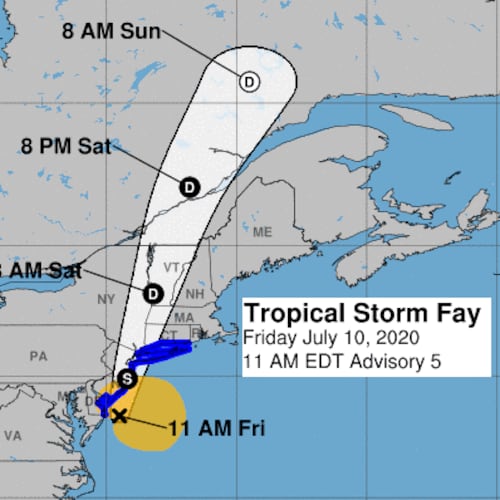President Donald Trump is sending Congress a spending plan for 2018 that would increase money spent on defense and border security, cut many areas of non-defense spending by Uncle Sam, and achieve a balanced budget by 2027, though it would add several trillion dollars to the national debt along the way.
Here are some of the early highlights from the Trump budget.
1. Over $3.1 trillion in new debt over 10 years. The Trump budget does get to a surplus - but it takes ten years to reach that point, in 2027. So, even if this President serves two terms in office, he would be gone from the White House before balancing the budget under this plan. Despite all the talk about cuts, the President's 2018 budget would not get the yearly budget deficit below $400 billion until 2023. Here are the yearly deficit estimates under the Trump 2018 budget plan, which add up to $3.15 trillion in more debt over the next ten years:
2018 - $440 billion
2019 - $526 billion
2020 - $488 billion
2021 - $456 billion
2022 - $442 billion
2023 - $319 billion
2024 - $209 billion
2025 - $176 billion
2026 - $110 billion
2027 - $16 billion surplus
2. Real cuts in Trump plan, but beware the numbers.You will hear a lot of reporting that the President's 2018 budget envisions $1.4 trillion in cuts over ten years in non-defense spending. Don't believe that, because of the way Congress totals up spending cuts. But, the Trump budget will actually cut the amount of discretionary spending by 2027, not just have the budget grow by a smaller amount each year. For example, in 2018, the President's plan would spend $1.244 trillion on programs outside of Medicare, Medicaid and Social Security (known as discretionary spending programs, which are voted on each year by the Congress) - that number would be trimmed to $1.151 trillion in 2027, according to figures provided by the White House. I know a little about math, as that is an actual spending cut of 7.5 percent - this is not just a reduction in a planned level of increase.
3. What areas will take the biggest budget hit? While the Pentagon, border security, Veterans Affairs and homeland defense will see overall increases under this Trump plan, a number of other federal departments and agencies would see cuts in 2018. (These would be real cuts, not just a reduction in a level of increase.) Here are the biggest losers in percentage terms:
+ EPA - 31.4% budget cut (from $8.2 to $5.7 billion)
+ State Department & foreign aid - 29.1% budget cut
+ Agriculture - 20.5% budget cut ($22.7 to $18 billion)
+ Labor - 19.8% cut ($12.1 to $9.7 billion)
+ HHS - 16.2% cut (from $78 to $65.3 billion)
+ Commerce - 15.8% cut (from $9.2 to $7.8 billion)
+ Education - 13.5% cut (from $68.2 to $59 billion)
+ HUD - 13.2% cut (from $46.9 to $40.7 billion)
+ Transportation - 12.7% cut ($18.6 to $16.2 billion)
4. Cool GOP reaction to parental leave plan. Pressed by his daughter Ivanka, the President's budget sets aside $25 billion over ten years for a project that is sure to draw more support from Democrats than Republicans - allowing parents time off to be with a newborn baby. "For the first time ever - by any administration of any party - we are proposing a nationwide, paid parental leave," said Mulvaney. The plan would allow for six weeks of time off - Democrats have proposed plans that have double that amount of leave and more. The initial reaction from Republicans was as you might expect - they're not into the idea.
5. Federal workers would see retirement changes. The President's budget would look to reduce retirement benefits for federal workers, saving an estimated $72 billion over ten years, according to figures released by the White House. Among the ideas, reducing retirement benefits by limiting and/or eliminating yearly cost of living adjustments; and increase the amount of money employees must contribute to their retirement plan. The details are sure to draw complaints from federal employee unions and lawmakers in the Washington, D.C. region.
Many more details will be available on Wednesday morning, as the budget - titled a "New Foundation for American Greatness," is delivered to Capitol Hill.
"If I had sort of a subtitle for this budget, it would be the "Taxpayer First Budget," said White House budget chief Mick Mulvaney.
Mulvaney will get the chance to defend the plan starting Wednesday on Capitol Hill.
About the Author
The Latest
Featured



